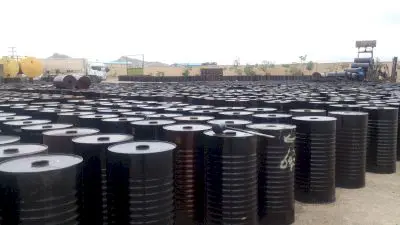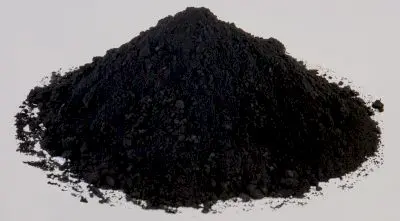Petroleum Prices in Qatar
Qatar has desert, hot and dry climate and oil and gas are main revenue of Qatar economy. According to the International Journal of Oil and Gas, there are over 6,000 petroleum products. Qatar in terms of gross fixed capital formation has been able to reach 78618.00 million Qatari Rials. Meanwhile, the national companies distributing petroleum products in the Middle East, using the existing experts in the field
Add your import and export orders to this list
Warning: Undefined variable $formTitle in /home/anbar/domains/anbar.asia/anbar/inc/html/desktop/orderform.php on line 10
Warning: Undefined variable $marketName in /home/anbar/domains/anbar.asia/anbar/inc/html/desktop/orderform.php on line 12
Warning: Undefined variable $location in /home/anbar/domains/anbar.asia/anbar/inc/html/desktop/orderform.php on line 12
If you want to trade in the , please join in Anbar Asia. Your order will be shown here, so the traders of contact you

The source of foreign exchange earnings in Qatar is oil and gas exports, which is the third-largest holder of gas reserves. Asphalt, which is used to make roads and roofs flat or impenetrable, is one of the most widely used petroleum products. Qatar has a structure similar to the monarchy, sovereignty is inherited and the emir is the head of state and the highest decision-maker. In principle, the applicant countries for the import and purchase of petroleum products in the Middle East
- Qatar Bitumen Market
- Qatar Engine Oil Market
- Qatar Petroleum Coke Market
- Qatar Paraffin Market
- Qatar Base Oil Market

In refineries, different parts of crude oil are separated and other usable products are introduced into production. According to the International Journal of Oil and Gas, there are over 6,000 petroleum products, most of which are used in our daily lives, and perhaps few people know about their relationship to oil.
Read More ...
The Achaemenid dynasty used bitumen for sealing and waterproofing the palace with the grandeur of Persepolis. Remains of it can be seen in the historical complex of Persepolis. Ancient Susa artists used a mixture of bitumen and heated it to obtain a composition that was very similar to stone. They used this material to make various objects as well as to make sculptures and fossils.
Read More ...
Petroleum coke (Petcoke) is the final carbon-rich solid material obtained from the oil refining process and is a group of fuels known as coke. Petroleum coke is specifically obtained from a final cracking process, which is considered a chemical engineering process, and the hydrocarbons of the oil chains are divided into shorter chains in a section called the coke unit.
Read More ...
Note that any disrespect to the flag of Qatar is prosecuted. Qatar is one of the countries that has achieved good results in recent years in terms of legislation and crime reduction. Never make fun of the language of Qatar. Keep in mind that the strictness of the Qatari hijab has decreased in recent years, but it still exists.
Read More ...Qatar Crude Oil: Exports was reported at 502. Qatar Crude Oil: Exports data is updated yearly, averaging 490. Qatar Crude Oil: Exports data remains active status in CEIC and is reported by Organization of the Petroleum Exporting Countries. View Qatar's Crude Oil: Exports from 1980 to 2020 in the chart: max 1y 5y 10y bar line area spline areaspline column Apply Get this data There is no data available for your selected dates. What was Qatar's Crude Oil: Exports in 2020? Last Previous Min Max Unit Frequency Range 502. 883 2020 yearly 1980 - 2020 Qatar (Barrel/Day th) 502. Learn more about what we do Qatar Key Series Buy Selected Data Includes 219 key indicators for Qatar, curated by CEIC analysts. 000 Jun 2020 quarterly Jun 2014 - Jun 2020 Load more More Indicators for Qatar Indicators Last Frequency Range Gross Domestic Product (GDP) (QAR mn) 156,310.
Read More ...
The year 2015 was a challenging one for Qatar’s oil and gas industry. Despite these challenges, Qatar is better positioned than many. Although state-owned Qatar Petroleum (QP) underwent major restructuring during the first half of 2015, it is slated for medium-term growth after launching a new strategy targeting investment in foreign production projects. Qatar’s energy sector is vast, complex and well developed, encompassing a diverse array of state-owned energy companies, along with strong private sector participation in nearly all major energy projects. QP and its subsidiaries operate at onshore locations including Doha, Dukhan, and the Mesaieed and Ras Laffan industrial cities; offshore activities on Halul Island, North Field; and other offshore production stations and drilling platforms. Shortly after Al Kaabi’s appointment, the company began a restructuring programme involving an operational overhaul, staff redundancies, the absorption of subsidiary Qatar Petroleum International and a new strategy focused on international investment in new production (see analysis). Qatar, like many of its GCC neighbours, relies on hydrocarbons export revenue to support its economy, and the state felt the pains of significantly lower prices in 2015. 8% in 2012 and 2013, respectively, according to Qatar National Bank (QNB) data. Qatar will record its first budget deficit in 15 years in 2016, with expenditure of QR202. Despite these near-term woes, Qatar remains well positioned to maintain its spot as the leading global LNG producer and exporter. Natural gas production and export is the backbone of Qatar’s energy economy. The EIA reports that Qatar is the world’s fourth-largest dry natural gas producer after the US, Russia and Iran, and holds the world’s third-largest proven reserves of gas at 872trn standard cu feet (scf) as of January 2015, which have provided it with the feedstock needed to fuel expansion within its petrochemicals industry. Qatar exported nearly 4. Historically, the majority of Qatar’s LNG exports have been made under long-term oil-indexed contracts, although recent years have seen the state shift to short-term contracts and spot market sales, with these comprising about one-quarter of LNG exports in 2012, according to data from the EIA, which reported that more than 90% of Qatari LNG production is committed as part of supply purchase arrangements running to 2021. Qatar has often emphasised development of integrated, large-scale projects linked to LNG exports and downstream industries requiring natural gas feedstock, a strategy that has led to tremendous growth and success over the past 15 years. It has also drawn a number of major IOCs into the Qatari market, bringing valuable investment and expertise, most notably Shell, ExxonMobil and Total. Qatargas Operating Company (Qatargas) is the largest LNG producer in the state, and, with production capacity of 42m tonnes per annum (tpa), the largest LNG-producing company in the world, operating four major LNG ventures known as Qatargas 1, 2, 3 and 4. Qatar’s second-largest LNG company is RasGas Company (RasGas), which operates three major LNG ventures, known as RasGas Laffan I-III. The two companies offer a combined capacity of 77m tpa and handle their own upstream, downstream and transport operations, although both charter LNG vessels from Qatar Gas Transport Company (Nakilat) for export shipments. Qatargas’ chartered fleet includes 43 purpose-built vessels, comprising 13 Q-Max, 19 Q-Flex and 11 conventional LNG vessels, while RasGas owns a charter fleet of 27 ships, including 12 large Q-Flex vessels. Nearly the entirety of Qatar’s gas reserves is concentrated in the North Field, which together with Iran’s South Pars field forms the world’s largest natural gas deposit. The North Field comprises four separate reservoir layers that narrow towards Qatar, making the field shallower than South Pars and presenting challenges to producers. With this in mind, Qatar announced a moratorium on new production in the North Field in 2005, and although the ban was initially expected to be lifted in 2008, it remained in place as of mid-2016. The find marked Qatar’s first new discovery of gas in 42 years, under an EPSA between QP and IOCs including Germany’s Wintershall, which signed an EPSA for Block 4 development in 2008, and Mitsui Gas Development Qatar, which joined in 2010 by acquiring 20% of Wintershall’s interest in the project. In May 2015 Wintershall also announced that it planned to leave Qatar and the Khuff project, citing lack of access to local infrastructure as the primary reason behind its decision. 4bn scfd of gas added to the Qatari market, the EIA reports that Barzan is only expected to offset some of the anticipated production decline in the North Field. With oil and gas production expected to, at best, remain steady over the medium term, Qatar is increasingly turning towards value-added GTLs to bolster its hydrocarbons revenue, following the cancellation of two high-profile planned petrochemicals projects in 2014 and 2015. The GTL segment thus remains primed for steady future expansion, as witnessed by a contract awarded in 2015 for a Qatar III helium plant (Helium 3). One of Qatar’s major competitive advantages lies in its GTL production, which processes natural gases into heavier hydrocarbons. Qatar is one of just three countries, including South Africa and Malaysia, to hold operational GTL facilities, with Pearl GTL standing as the largest GTL plant in the world. 6bn scfd of natural gas feedstock to produce 140,000 barrels per day (bpd) of GTL products, in addition to 120,000 bpd of natural gas liquids and liquefied petroleum gases (LPG). When construction on Helium 2 finished, Qatar became the world’s second-largest producer of helium gas, which is currently in short supply globally, painting a bright forecast for expansion of helium production within the state. Although Qatar has been a member of OPEC since 1961, it is also the organisation’s member with proven crude reserves of 25. Oil production in Qatar has been declining in recent years, with non-crude liquids production surpassing crude oil production for the first time in history in 2012 as a result of growth in output of natural gas condensates, which produce heavier hydrocarbons in addition to natural gas. At the same time, declining production at Qatar’s mature oilfields has further diminished oil’s share of the energy mix. Crude oil made up 35% of petroleum and liquid production in 2014, compared to 44% in 2010. According to the EIA, Qatar produced 2. 1m bpd of petroleum and other liquids in 2014, of which 1. Three main fields make up the majority of oil production in Qatar: Dukhan, which is operated by QP; Al Shaheen, currently operated by Maersk; and Idd Al Sharqi, which is operated by Occidental. Additional oil reserves are located at the offshore Bul Hanine and Maydan Mahzam fields, as well as the onshore Al Khalij, Al Karkara and Al Rayyan fields, the latter of which became Qatar’s most recent discovery after commercially viable deposits were found in 1994. Japan’s Qatar Petroleum Development Company operates Al Karkara. Qatar produces three main crude oil streams: the heavier crude Al Shaheen and the lighter Qatar Land and Qatar Marine blends. Maersk has announced plans to cease operations in Qatar thereafter. In May 2014 QP announced plans to invest more than QR40bn ($11bn) in the redevelopment of Bul Hanine, which is located roughly 120 km off the east coast of Qatar. Qatar is home to two oil refineries with total combined crude oil refining capacity of 338,700 bpd. The oldest of these, the 100% QP-owned Qatar Petroleum Refinery, was established in 1958 and today has a capacity of 137,000 barrels per stream day (bpsd), as well as 57,000 bpsd of condensate refining capacity to process feedstock into value-added products. Decades of rising natural gas production have boosted Qatar’s production of condensates and natural gas plant liquids to 700,000 bpd in 2015, with exports of 500,000 bpd, according to the EIA. Condensate production is becoming a major driver of energy sector growth since the Laffan Refinery, Qatar’s first condensate refinery and one of the world’s largest, started production in September 2009. Using gas from Qatargas and RasGas facilities, the Laffan Refinery is owned by QP (51%), ExxonMobil (10%), Total (10%), Idemitsu (10%), Cosmo (10%), Mitsui (4. Production capacity for naphtha, for example, stands at 61,000 bpsd, while production of kerojet, gasoil and LPG is 52,000 bpsd, 24,000 bpsd and 9000 bpsd, respectively, according to Qatargas. In September 2014 Qatar’s state-owned petrochemicals and steel producer, Industries Qatar, announced that it was shelving plans to build a $6bn petrochemicals project known as Al Sejeel, which would have been carried out as a joint venture between Industries Qatar and QP. According to both companies, the project was not financially feasible, although state-owned petrochemical players, including the Qatar Petrochemical Company, Qatar Chemical Company, Qatar Vinyl Company and Ras Laffan Olefins Company, are now able to expand their operations using the feedstock that had been reserved for the project. The state’s energy market remains a major strength, with strategic foreign investment, optimisation and restructuring expected to help Qatar weather the worst of international energy market volatility. Investments in new GTL projects also indicate a promising future for value-added production, and although production and revenues are struggling at present, ambitious plans to expand the use of EOR, the potential for new gas discoveries outside of the North Field and rising condensate production will keep Qatar at the forefront of both the GCC and international market as it moves into 2017. This article is from the Energy chapter of The Report: Qatar 2016.
Read More ...
DUBAI, June 30 (Reuters) - Qatar Petroleum (QP), one of the world's top liquefied natural gas (LNG) suppliers, sold $12. But QP contributes to 80% of Qatar's budget versus 60%" for Aramco's contribution to Saudi Arabia's budget, said Zeina Rizk, executive fixed income director at Arqaam Capital. QP signed a contract in February for the first phase of its North Field LNG expansion project, which aims to boost Qatar's LNG output to 126 million tonnes per annum (mtpa) by 2027 from 77 mtpa currently. Fitch Ratings assigned QP a long-term rating of AA, in line with Qatar's sovereign rating, saying it was by that of the sole shareholder - Qatar". Qatar Petroleum changed its name to Qatar Energy to reflect its energy efficiency and environmental initiatives in the context of changing trends. The national energy company of Qatar, Qatar Petroleum, has changed its name to Qatar Energy as part of an effort to signal a new strategy that focuses on energy efficiency and technology. The name change in Qatar is part of a growing trend among large energy companies in the oil and gas sector as they try to shift focus away from their fossil fuel activities. Qatar is the world’s biggest exporter of liquefied natural gas (LNG). Al-Kaabi said that he was that global gas prices are currently so high and that Qatar Energy was producing at maximum capacity. Although Qatar is spending billions of dollars to increase output, it has said it will struggle to boost production in the near term. “We are maxed out,” Al-Kaabi said at an event in Doha, adding that volumes are currently around 80 million tonnes a year. Qatar has the world’s lowest production costs thanks to an abundance of gas, most of it contained in the giant North Field that extends into Iran, where it is called South Pars. Qatar aims to increase LNG output by around 50% by 2027, a project that will cost almost $30bn. Related Report Qatar Petroleum becomes Qatar Energy Get the Report Latest report from Browse over 50,000 other reports on our store.
Read More ...
https://oxfordbusinessgroup.com/overview/market-share-matters-despite-global-price-volatility-country-remains-leading-player-oil-and-gas
https://www.ceicdata.com/en/indicator/qatar/crude-oil-exports

